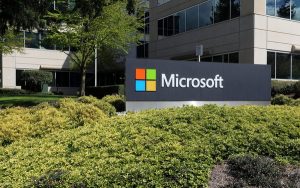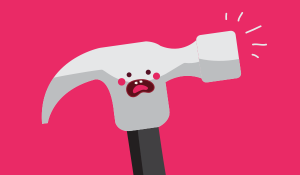Advertisers need to remember constant reevaluation of their methods is crucial in today’s environment.
Something that never fails to shock me is how much things change from one year to the next in paid social.
Things we evangelized a year ago were either: in their infancy (using Facebook ads as a sales funnel instead of only bottom of funnel) or they were at peak maturation (setting and forgetting your ads for conversions and getting stellar results). There was almost nothing in-between.
Cutthroat creative makes a comeback
Consumer attention spans are low, out of necessity. Prolific levels of advertising volume cause users to protect their attention, saving it only for more remarkable things that connect with them quickly. Throwing more ad dollars at more impressions will never solve that problem, which leaves a lot of brands examining their budget and outputs for 2019.
What is already happening (and, indeed, is what I think must) is a circling-back of sorts to a creative focus. While no one has ever doubted the importance of creative, everything in paid social was new and fresh, so it didn’t have to be thought about as much.
Now?
The gimmicks have been found and exploited. Tired copy tropes, shaky UGC video and all its ilk, wrung every last drop of out of easier, low-budget shortcuts.
Clients are frustrated things that worked six months ago no longer do, but that effort needs to be put into moving forward, not grasping desperately to old ways. More budget needs to be allocated to strategizing smart creative because it is not a sunk cost. Better, smarter creative means spending MORE on the creative strategy, and LESS money on media running things that won’t work because they’re stale. Invest more up front for more efficient spending once it’s live.
Facebook’s foibles and frailty
Another evolution: some spectacular failings by Facebook for its ads platform are driving cries for diversification of budget allocation.
The unreliability of Ads Manager is shaking the confidence of media managers, to say nothing of Facebook’s external-facing company issues. Advertisers, thirsty to move funds elsewhere, most haven’t because there is no alternative with Facebook’s ad volume. It’s not because they feel loyal to the platform. This may spell trouble for Facebook as places like Pinterest (who hired their first CMO recently) and Twitter (who started to turn the corner this year on ad revenue) continue to innovate and grow.
The customer attention span noted above is also an issue for advertisers coming up against users who are blind to most ads in an environment with already capped out ad inventory. While Facebook scrambles to try new placement types for inventory expansion, advertisers are largely yawning at them. Even the pockets of successful offerings aren’t large enough for the scale that would fulfill advertiser-side demand.
Shifting sands of attribution
As the paid social avenues have grown, diversified and stumbled, there’s a growing awareness among advertisers about the perils of relying on last-click attribution. When these tried-and-true methods fail, there is no safety net. Media dollars are getting torched with no backup plan and an over-reliance on myopic portals of attribution.
Advertisers are getting savvier about the customer journey, however. The last-click infestation that was largely started by paid search being the main avenue of spend for many advertisers is waning. A growing realization that users exist and pass among multiple touchpoints daily, weekly and monthly is forcing brands to focus on driving awareness of something they can own: their own name.
This also coincides with the rise of Amazon’s domination of the e-commerce marketplace. Advertisers are feeling the burn of smaller margins, and the financial fortitude required to advertise against Amazon to try and keep users on their platform. Accepting this reality, advertisers are (ever so slowly) shifting to diverting money back to brand awareness and I believe they will continue to do so.
Consider this: the money spent on raising brand awareness secures real estate in a user’s mind for a length of time to come versus the quick hit of the sale. It’s a longer-term strategy, but it’s the one that battens down the hatches against platforms you can’t outsell. Examining things like direct traffic growth and brand search growth through your media efforts may prove to be a formidable place for your media spend if competing directly against platforms like Amazon leave too little margin to be worth it.
Accept the reality of it, and adapt if possible. Brand awareness CPMs tend to be cheaper than conversion-focused bidding models. That’s not to say advertisers should abandon hope, but rather plan for spend to not be 100 percent on sale/immediate lead acquisition as in the past. Carving off a percentage for brand-based awareness is a “rising tide to lift all boats” strategy on third-party platform sales, helping offset the sometimes insanely high costs paid for a quick sale.
Never a dull moment, so sharpen your blade
As certain tactics reach the point of maturation, paid social remains in its infancy. Facebook has been a pioneer but the cracks are starting to show. Their grasp on advertiser loyalty driven by their reliability and results is tenuous, at best. Whether it’s growth that wasn’t managed well or sheer arrogance, it’s forcing advertisers to remember nothing is guaranteed and constant reevaluation on their methods is crucial in today’s environment.
Invest in your brand and your creative in 2019. If Facebook Ads are failing you, it’s time to move that money and test elsewhere. Accept that successful tests may not be measured by quick hits like they were, and open your eyes to the longer-term wins so you can plan accordingly for them. In the age of “crushing it,” the hares get the press, but the tortoises are the ones who are still around a few years later these days. Best practices in marketing still apply, no matter what the year’s number is. Keep your principles timeless.
Opinions expressed in this article are those of the guest author and not necessarily Marketing Land. Staff authors are listed here.
Marketing Land – Internet Marketing News, Strategies & Tips
(53)






